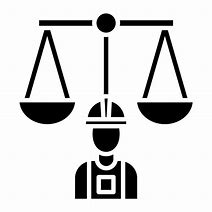In this case, child labourers in the construction sector of Delhi filed a complaint, claiming that Article 24 of the constitution which prohibits assigning children under the age of 14 to hazardous jobs had been violated. Additionally, representatives of construction companies employed workers from impoverished areas in Orissa, Bihar, West Bengal, Madhya Pradesh, Andhra Pradesh, and Rajasthan to work on the stadiums and infrastructure, including as flyovers and hotels, on the ASIAD-82 sites.
Facts of the Case
During the ASIAD-82 projects, workers endured exploitative conditions, including excessive hours without minimum wages and unsafe living environments. A fact-finding team from the People's Union for Democratic Rights (PUDR) uncovered these violations in 1981, prompting a Public Interest Litigation (PIL) filed in the Supreme Court.
In May 1982, Justices P.N. Bhagwati and Baharul Islam admitted the writ petition and directed the Union Government, Delhi Development Authority, and Delhi Administration to ensure workers received minimum wages and benefits as per labor laws. To enforce compliance, the court appointed three ombudsmen for the first time in India’s judicial history, tasked with monitoring construction sites and reporting weekly to the Supreme Court.
You can also read the Blog by visiting [Blog]
For more information, visit [Aashayein Enquiry Section]
Issue
· Whether a writ petition can be filed against a private individual under Article 32 of the Indian Constitution?
· Does Article 21 of the Indian Constitution encompass the right to livelihood and the right to live with dignity?
Contentions of Petitioners
Labour Law Violations: Contractors hired workers through intermediaries ("jamadars"), violating the Minimum Wages Act and Equal Remuneration Act, as wages were misappropriated and women were underpaid.
Child Labour: Employment of children under 14 violated Article 24 of the Constitution and the Employment of Children Acts.
Denial of Benefits: Workers were denied statutory benefits, breaching the Contract Labour Act and the Inter-State Migrant Workers Act
Contentions of Respondent
Lack of Locus Standi: Petitioners lacked standing as the issue concerned workers’ rights, and only workers could claim violations.
Contractor Liability: Contractors, not respondents, employed the workers, making claims against the respondents invalid.
Legal Remedies: Violations were governed by labor laws, and a writ petition under Article 32 was not maintainable.
Analysis of the Court
The Supreme Court held that financially vulnerable workers have the right to directly approach the Supreme Court under Article 32 of the Indian Constitution to enforce their rights under various labor laws, including the Minimum Wages Act of 1948, the Contract Labour (Regulation and Abolition) Act of 1970, the Interstate Migrant Workers (Regulation of Employment and Conditions of Service) Act of 1977, the Equal Remuneration Act of 1976, and the Employment of Children Act of 1970. The Court expanded the interpretation of the "right to life" under Article 21 to include the right to live with dignity and the right to a means of livelihood. It also broadened the scope of Articles 21, 17, and 23 to cover situations where workers are not paid their full lawful wages, emphasizing that forced labor violates human dignity and fundamental human rights. Specifically, the Court clarified that Article 23 prohibits not only “beggar” but all forms of forced labor, as they undermine basic human dignity. Recognizing the grave implications of such practices, the Court declared that it is the constitutional duty of government bodies, private individuals, and organizations to ensure the proper implementation of labor laws. Furthermore, it linked the concepts of “forced labor” and “bonded labor” to the fundamental right to live with dignity under Article 21, thereby elevating workers' rights and benefits under labor laws to the status of fundamental rights essential for safeguarding human dignity.
Concluding Remark
In conclusion, this case illustrates the transformative role of judicial activism and constitutional interpretation in protecting fundamental rights. It reaffirmed that fundamental rights are not only enforceable against the state but also against private individuals when their actions infringe upon these rights. The Court’s willingness to adapt procedural rules to ensure justice for marginalized groups set a powerful example of using the law to promote social welfare. By addressing long-standing exploitation and safeguarding workers’ rights, the judgment showcased the potential of Public Interest Litigation (PIL) as a tool for public welfare. It also expanded the scope of Article 21 to include dignity and basic human well-being, emphasizing the ultimate purpose of law: to achieve justice and societal harmony through fairness and effective legal application.

